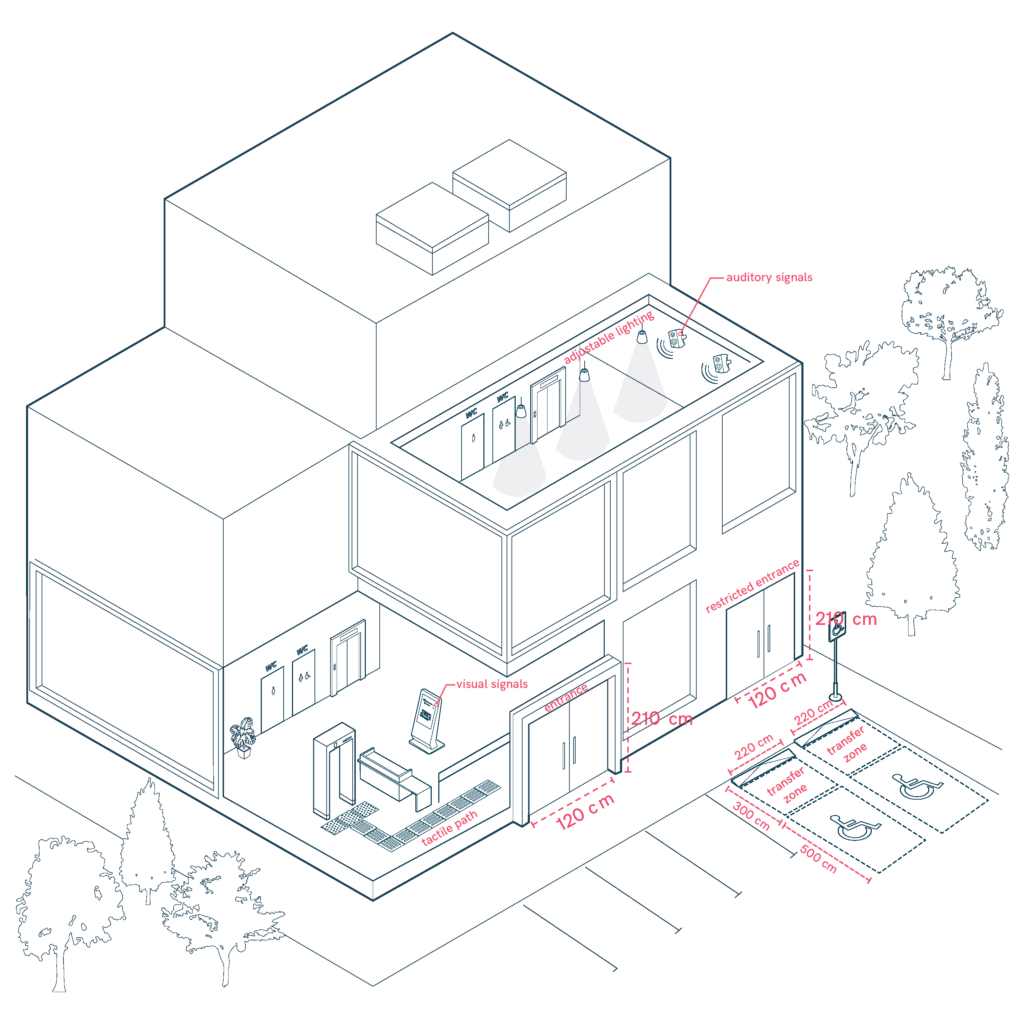General Aspects of State Buildings
Public administrative buildings must ensure accessibility in all areas, from entrances to waiting and circulation spaces. This involves the installation of accessible routes through metal detectors and other security barriers, ensuring an unobstructed flow for individuals with reduced mobility. Communication should be inclusive, with visual and auditory signals for those with hearing or visual impairments. Additionally, signage in braille and pictograms aids in orientation, while adjustable lighting and controlled acoustics enhance the experience for those with sensory sensitivities.

- At least one restricted entrance and one security entrance must be accessible.
- Installation of accessible routes through security barriers such as metal detectors, ensuring smooth circulation for individuals with reduced mobility.
- Bidirectional communication systems with visual and auditory signals for those with hearing or visual impairments.
- Wide corridors and spaces to allow comfortable circulation for wheelchairs and assisted mobility.
- Use of braille and pictogram signage at key points to facilitate orientation.
- Accessible restrooms in all public and employee facilities.
- Waiting and reception areas with accessible counters.
- Adjustable lighting and controlled acoustics for individuals with sensory sensitivities.
- Accessible lifts and ramps on all levels of the building.
- Parking with reserved spaces close to main entrances.
Sources
- https://accessible-eu-centre.ec.europa.eu/content-corner/digital-library/en-172102021-accessibility-and-usability-built-environment-functional-requirements_en
- https://www.access-board.gov/adaag-1991-2002.html#purpose
- https://observatorio2030.com/sites/default/files/2024-07/HABITATU%20-%20Guia%20para%20cruzar%20los%20limites%20de%20la%20normativa%20-%20CAST.pdf
- Carers
- Children
- Cognitive
- Cognitive abilities
- Decolonial perspective
- Digital
- Digital barrier
- Enviroment
- Environmental
- Gender and generations
- Gender perspective
- Hearing impairment
- Low-education
- Low-income
- Older people
- Other
- Physical abilities and features
- Sensory and Physical
- Socioeconomic
- Visual impairment